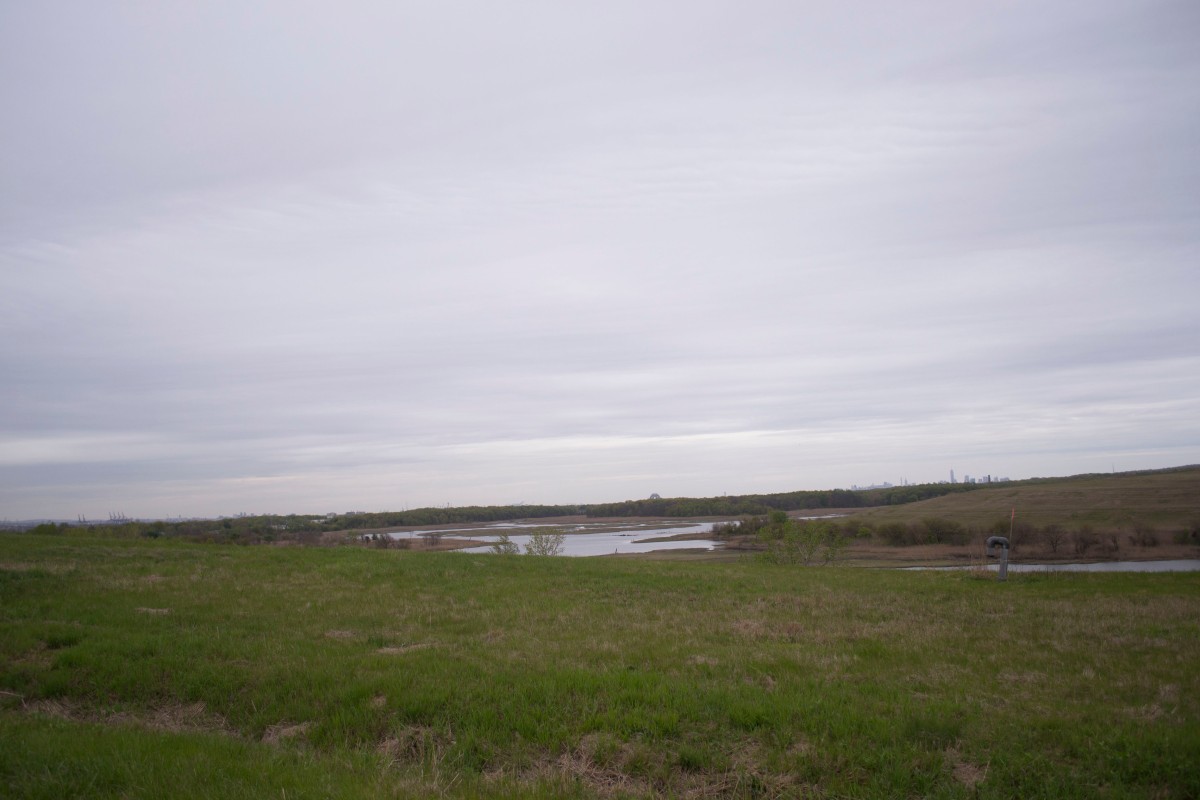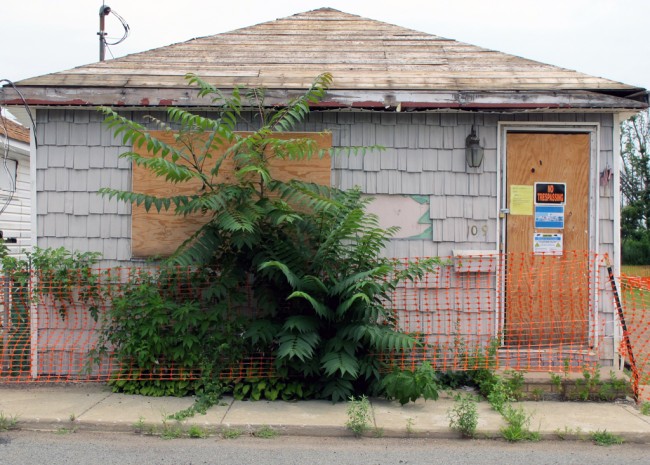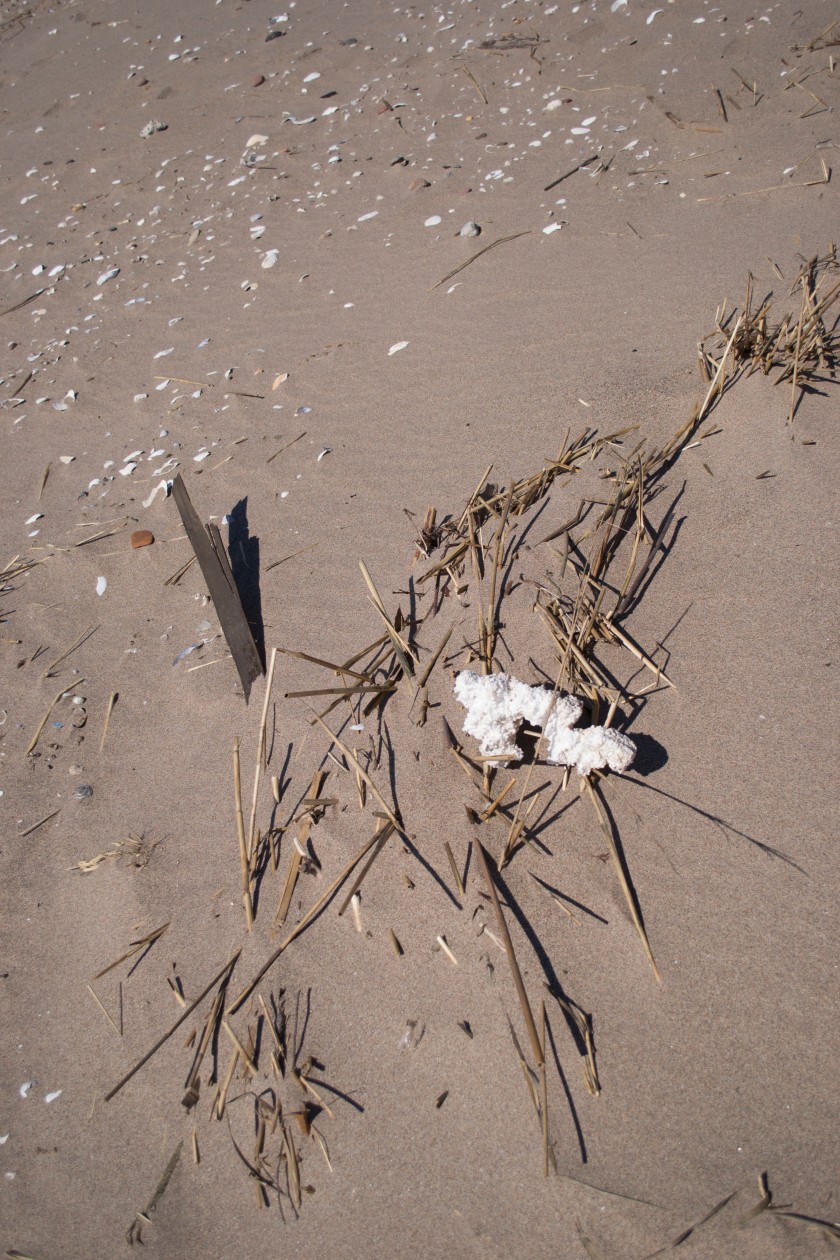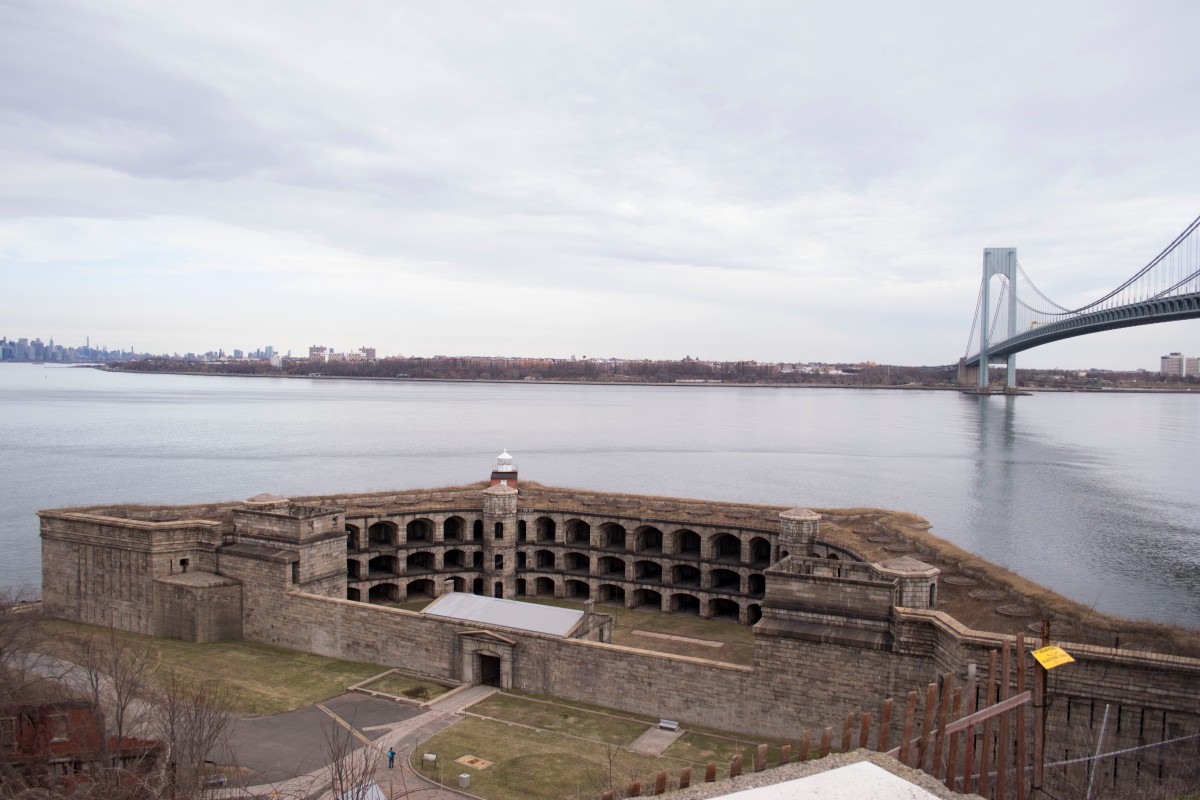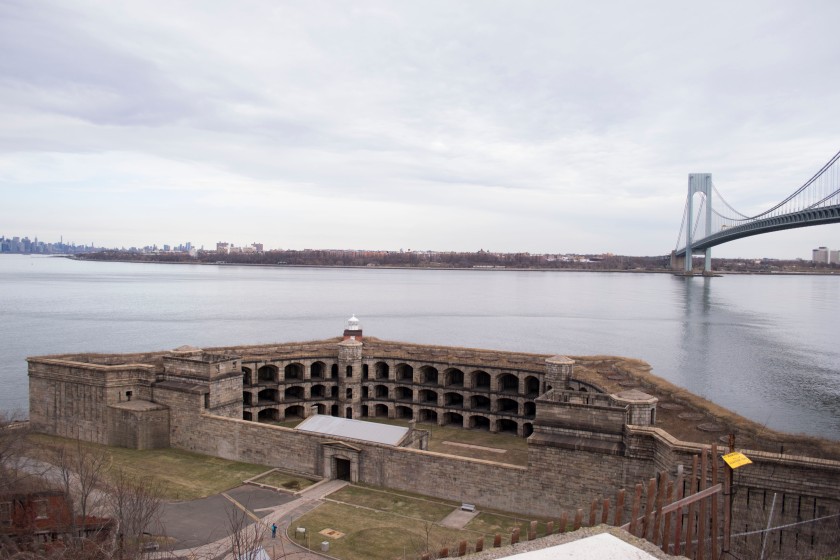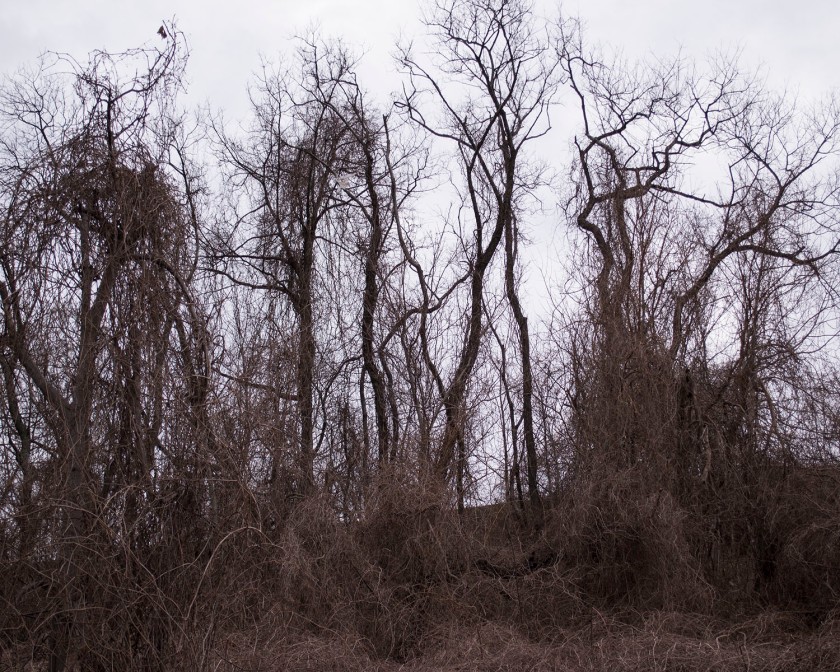It’s not impossible, but making your way to Freshkills Park is a bit of a trial. The park is not officially open yet, so one either has to visit during a planned event or get a group together for a tour. Despite the challenge, a trip to this amazing changing landscape is definitely worth the trek out to Staten Island.
Freshkills was originally opened in 1948 as a landfill. It was meant to be open for only three years, but it stayed open until 2001. A design competition was then held and a plan to create Freshkills Park was chosen. The company that won was Field Operations, the same group that designed the High Line. Work officially began on the park in 2010 and they hope to have it finished by 2030.
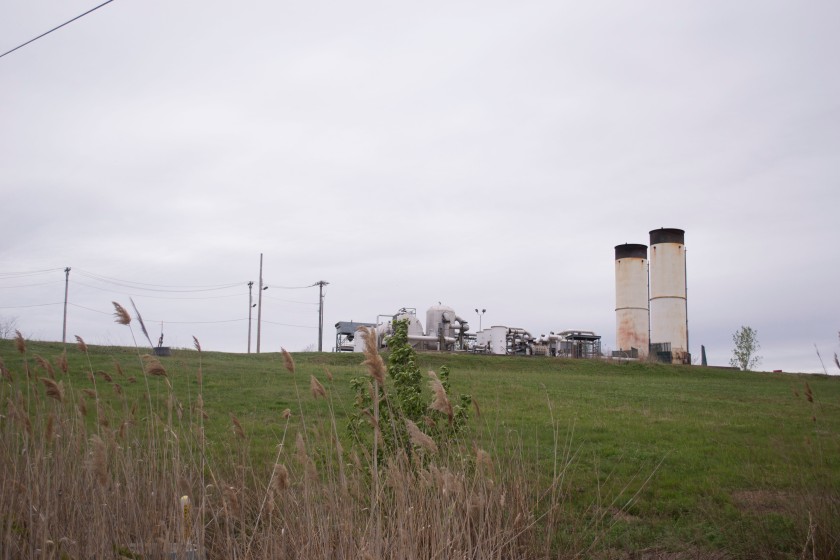
When I went on a tour of the park I was amazed that it used to be the world’s largest landfill. The rolling, grassy hills and the beautiful creek did not immediately scream trash mountain to me. Upon a closer look, I could see the signs of the past. Smoke stacks behind hills, garbage trucks, and gas well heads scattered throughout the landscape reminded me that the hill I was climbing was almost entirely made of trash. Between me and the trash was a soil barrier layer, a gas vent layer, an impermeable plastic liner, a drainage layer, at least two feet of barrier protection material, and at least six inches of planting soil. The engineers who designed this park had safety in mind when considering how to cover the trash. The drainage layer is to make sure that leachate (water that mixes with waste and toxic substances) would not leak into the kill (an old Dutch word for creek). The gas vent layer connects with the gas well heads and then the landfill gas (LFG, which consists of methane, carbon dioxide, water, and other organic matter) is then collected and stored. Since methane and CO2 are both greenhouse gasses, it is important that LFG is collected so they are not released into our already polluted atmosphere.
Freshkills, as well as reusing a damaged landscape and converting it into a natural area for the city to enjoy, also pays attention to how it can be environmentally sustainable. Currently the gas collected from the landfill is purified, sold to National Grid, and used to power many neighborhoods in Staten Island. In 2013 former New York City Mayor, Michael Bloomberg announced that Freshkills would be the site of the largest solar power installation in the city. This installation is expected to produce over 10 megawatts of power and make the city produce 50% more renewable energy. Wind turbines and geothermic heating and cooling systems might also be placed in Freshkills.
The reenergization of Freshkills also helps the city in other ways. The area was originally a low-lying salt marsh, but the landfill compacted everything and altered the landscape. The transformation of the landfill to a park has helped reestablish the marsh. The plan is to bring back native habitats and reduce non-native and invasive plants. Currently the park suffers from an infestation of non-native phragmites, a plant that looks like a tall grass and thrives near wetlands, but will take over any available lands. The park has used goats in the past to get rid of the invasive species, but the population of phragmites has come back. Anyway, the now reinvigorated marsh provides a vital service to Staten Island. During Hurricane Sandy, the hills of trash and waterways which were once used to float waste into the landfill, protected the neighborhoods of Travis, Bulls Head, New Springville, and Arden Heights from what could have been catastrophic flooding. Though they did still receive some of Sandy’s storm surge, they were saved from the worst of it.
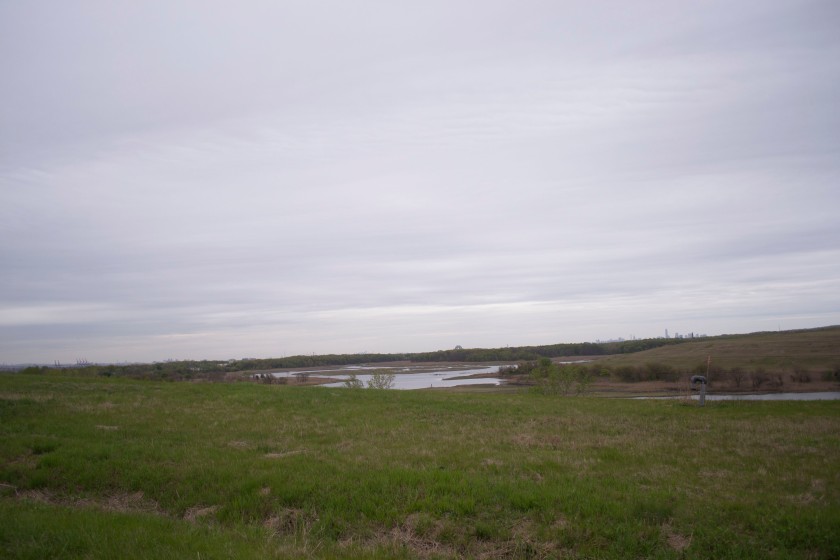
Freshkills Park is a symbol of our changing mentality toward the environment and a hopeful sign to end my journey through New York’s parks this semester. Though only two sections of the park are currently open for all year public use – Schmul Park and Owl Hollow Soccer Fields – Freshkills Park will one day become the second largest park in New York City and be sustainable. It was designed with protecting our environment in mind and promoting green energy. I believe that the conservation practices currently in place at the park in combination with the sustainable design will make Freshkills Park one of the most prepared parks in New York for the effects of climate change.
Helpful Links:
https://dirt.asla.org/2012/12/18/freshkills-park-protected-staten-island-during-hurricane-sandy/
http://freshkillspark.org/the-park/chronology-of-the-freshkills-park-site

